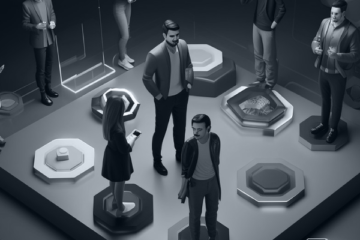Gamification by itself engages your audience and enthralls them. Introducing game-like elements into your product, service, or application enhances their value in myriad ways.
- Entertainment and Education:
- Gamification can make learning about your product fun and engaging. Implementing daily quests, achievements, and skills that users can unlock by trying specific features can transform customer education into an enjoyable experience.
- Competition:
- Creating a sense of competition among users can be highly motivating. For instance, having a live leaderboard can encourage users to strive for the top position, thereby increasing their engagement and productivity.
- Rewards:
- Rewarding users for positive actions can incentivize them to repeat those actions. By recognizing and rewarding specific user behaviors, you can encourage consistent engagement with your product.
However, it’s also crucial to ensure that gamification enhances the user experience rather than detracting from it. Care should be taken to ensure the game introduced takes the users closer to their goals or objectives. Overly intrusive game mechanics can frustrate users and hinder their ability to achieve their goals. Engaging your audience through gamification should be strategic and a few techniques listed below can enhance engagement.
How to Enhance Engagement through Gamification
Implementing gamification effectively involves understanding and utilizing the key game design elements. Here are some essential elements to consider:
Checklists:
Checklists can break down complex processes into manageable steps, making tasks feel like a fun journey rather than a chore. This approach can be particularly effective during onboarding, helping new users get started and reducing churn. By providing real-time feedback and inculcating a sense of accomplishment, checklists can keep users motivated and engaged.
Progress Bars
Progress bars create a sustained sense of achievement that drives engagement. Different types of progress bars can be used depending on the product—fitness apps might use streak-style graphs, while B2B software might opt for standard bars, wheels, or completion percentages. Progress bars can make onboarding more gradual and less intimidating for users.
Native Tooltips
Tooltips can announce new features, tease with updates, or guide users on unfamiliar functionalities. Adding engaging elements like emojis, badges, or progress bars to tooltips can increase user interaction. Tooltips are ideal for enhancing feature discovery, upselling, and improving the onboarding experience.
Points and Badges
Points and badges provide users with milestones to strive forward, like video game mechanics. Publicly displaying points can foster competition among users, encouraging them to engage more with the product. Expiring badges can maintain long-term engagement by rewarding regular use and promoting customer loyalty.
Rewards and Celebrations
Celebrating user achievements can build stronger customer relationships. Offering points, XP, discount coupons, free merchandise, or even simple congratulatory animations can make non-game activities as rewarding as completing a game level. This approach can cultivate customer loyalty and make users feel valued.
Best Practices for Nailing Engagement with Gamified Elements
Be it an application, a SaaS product, or whether it is for motivating your salespeople, adhering to these best practices will maximize the effectiveness of gamification.
Personalize Experiences and Rewards
Personalization is the key to successful gamification. Tailor-make the game elements and rewards to suit your target audience. For instance, a project management tool for freelancers should have different gamification elements than an accounting software for executives. Use engagement analytics to refine your approach and ensure challenges and rewards match the user’s stage in the customer journey.
Create Engagement Loops
Engagement loops tie multiple user experiences together, creating continuous engagement. Use rewards, in-app elements, and push notifications to keep users moving through the adoption process until they become loyal customers. Positive reinforcement is essential for maintaining user interest and engagement.
Let Users Choose Their Path
Gamification should be fun and optional. Allow users to opt out of challenges, leaderboards, and pop-ups if they prefer a straightforward experience. Avoid punitive measures for failing challenges, as this can quickly turn users off.
Conclusion
Advanced gamification techniques can significantly drive user engagement and retention. By integrating elements like checklists, progress bars, tooltips, points, badges, and rewards, you can create a more engaging and enjoyable user experience. Personalizing these elements and creating engagement loops ensures that gamification aligns with the users’ needs and preferences. Allowing users to choose their path prevents frustration and keeps the experience enjoyable. With these strategies, you can enhance user satisfaction, increase product adoption, and build long-term customer loyalty.


